The two provinces of Quang Binh and Quang Tri used to be the same province, Binh Tri province, then merged into Binh Tri Thien province. After many mergers, in 1989, these two provinces were re-established and remain the same until today. Quang Binh is strong in developing tourism - smokeless industry, Quang Tri is strong in developing clean energy and renewable energy.
Origin of the name of the province "Binh Tri"
The name "Binh Tri" that people often mention originated from the two provinces of Quang Binh and Quang Tri since 1890 under the Nguyen Dynasty under the protectorate of French colonialism.
Quang Binh and Quang Tri provinces are two localities located in the North Central region, sharing many historical, cultural and geographical features. The name Binh Tri is also associated with a larger province called Binh Tri Thien, including Quang Binh, Quang Tri and Thua Thien Hue provinces, which was established in 1975.
Binh Tri Thien province was established in 1975 on the basis of merging Quang Binh and Quang Tri provinces with Thua Thien province.
In 1989, Binh Tri Thien province was divided into 3 provinces: Quang Binh, Quang Tri and Thua Thien Hue. Thua Thien Hue province is now called Hue city (a city directly under the central government).
During some periods, these two provinces were referred to together under the name "Binh Tri", reflecting their geographical and traditional connection.
Historically, both Quang Binh and Quang Tri played an important role in protecting the southern border of Dai Viet during the Le dynasty, being a strategic gateway during the resistance against France and the US.
In particular, during the resistance war against the US, these two provinces were on the front line, were fierce fighting areas, and were also important rear areas of the North.
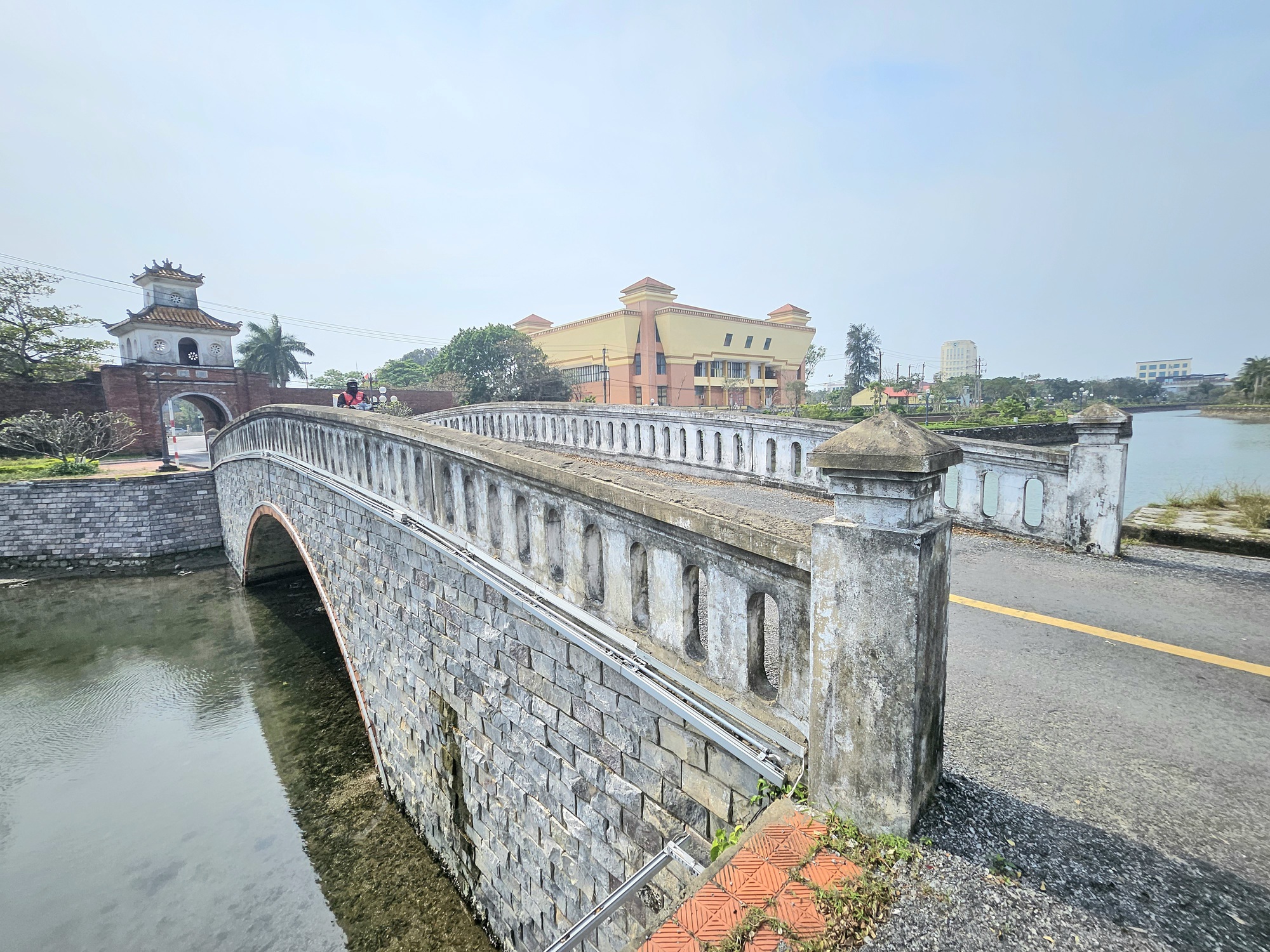
The East Gate area of Dong Hoi Citadel (Quang Binh province) today. Photo: Tran Anh
According to the records of the Nguyen Dynasty Woodblocks, in 1831 King Minh Mang (Nguyen Dynasty) carried out administrative reforms.
King Minh Mang decided to establish 31 provinces in the country, the central region was divided into 11 provinces, of which Quang Binh and Quang Tri provinces were placed under the governance of a Governor, called "Binh Tri Governor", the Governor's Palace, which was also the capital, was located in Dong Hoi city.
After many historical changes, in 1890, the Governor-General of Indochina issued a decree to merge Quang Binh with Quang Tri into Binh Tri province, under the authority of the Dong Hoi Resident.
In 1896, the Governor-General of Indochina withdrew Quang Tri from the territory under the jurisdiction of this consul, placing it together with Thua Thien under the authority of the Resident General of Annam.
In 1900, the Governor-General of Indochina issued a decree separating Quang Tri from Thua Thien, establishing a separate province consisting of 4 prefectures: Trieu Phong (former Thuan Xuong district), Hai Lang prefecture, Vinh Linh prefecture (former Chieu Linh district), Cam Lo prefecture and Gio Linh district.
In 1976, Quang Binh, Quang Tri, Thua Thien and Vinh Linh area were merged by the state into Binh Tri Thien province.
In 1989, Quang Binh and Quang Tri provinces were re-established and remain intact to this day (that same year, Thua Thien - Hue province was re-established and in 2024 was recognized as a centrally-run city).
Tourism, smokeless industry, economic spearhead of Quang Binh
In recent years, Quang Binh province has focused on attracting investment, developing tourism and promoting high-tech agriculture, contributing to promoting sustainable growth.
Quang Binh has become an attractive destination for domestic and foreign investors thanks to its open policies, favorable investment environment and increasingly improved infrastructure system.

Image inside Son Doong Cave - the world's largest natural cave located in Quang Binh province. Photo: Oxalis
In recent years, the province has licensed investment for a series of large projects, focusing on areas such as renewable energy, eco-tourism and processing industry.
Some notable projects include the 210 MW B&T wind power plant, a luxury resort in Phong Nha - Ke Bang, and a high-tech agricultural complex.
World Natural Heritage - Phong Nha-Ke Bang
Possessing the world natural heritage Phong Nha - Ke Bang and a system of majestic caves such as Son Doong and Thien Duong, Quang Binh has affirmed its brand as one of the most attractive destinations in Vietnam.
According to the leader of the Department of Culture, Sports and Tourism of Quang Binh province, in 2024, the number of tourists to Quang Binh will increase by 20% compared to the previous year, reaching more than 5 million visitors, including more than 500,000 international visitors. Adventure tourism products such as cave exploration, trekking in primeval forests, and community tourism attract tourists, contributing to increasing tourism service revenue and developing the local economy.
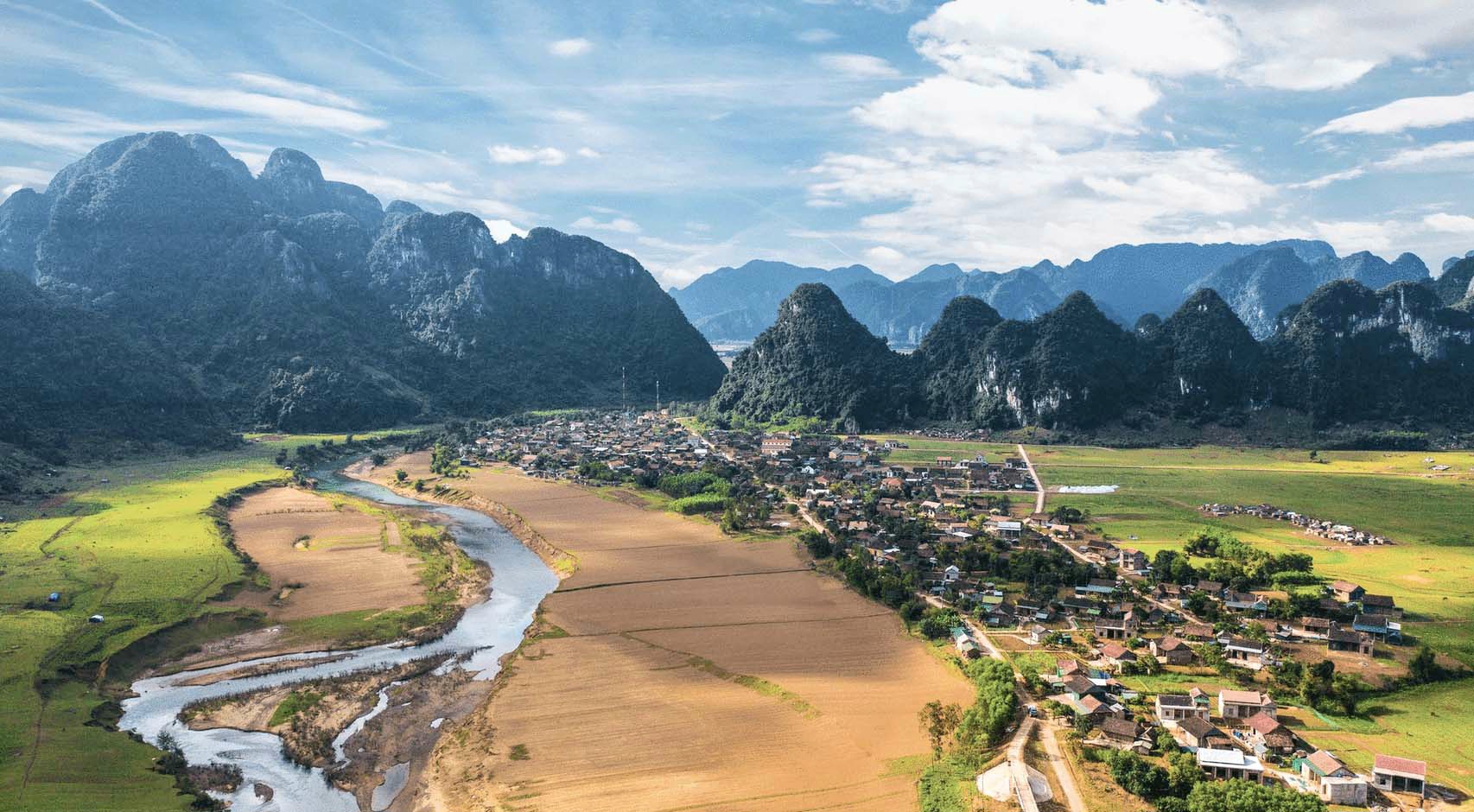
Panoramic view of Tan Hoa commune (Minh Hoa district, Quang Binh province), the village recognized as "The best tourist village in the world". Photo: Oxalis
In addition, the province also focuses on developing sea tourism with pristine beaches such as Nhat Le, Bao Ninh, Da Nhay, combined with high-class resorts, creating diversity in tourism products.
Quang Binh Agriculture
In addition to tourism, Quang Binh is also promoting the application of high technology in agricultural production to enhance the value and competitiveness of products. Smart farm models and organic agriculture are being implemented in many districts such as Quang Ninh, Le Thuy, and Bo Trach.
Currently, the whole Quang Binh province has 217 high-tech agricultural production facilities, in which the rate of livestock and aquaculture facilities has increased significantly, especially high-tech production and processing facilities.
Quang Binh province has 65 establishments certified for VietGAP or food safety; 1,539/1,797 agricultural and aquatic product production and trading establishments are granted food safety certificates; 13 business locations are granted safe food supply chain certificates.
In the whole province, there are 113 establishments declaring the quality of 225 agricultural and aquatic products; 69 establishments are certified with VietGAP.
Quang Tri organic rice has the potential to "sell to the global market"
Currently, in Quang Binh province, over 80% of rice area, 70% of corn area, 40% of fruit tree area... use new varieties.
Up to now, the Department of Agriculture and Rural Development of Quang Binh province has supported the construction of 50 new greenhouses to produce VietGAP vegetables and fruits; the organic farming area is about 2,700 hectares.
Many models use automation and semi-automation technology in the process of growing and raising aquatic products; freeze-drying and quick-drying technology in preserving and processing agricultural products... Initial approach to artificial intelligence (AI) technology in management, care and pest control.
In 2024, the total product in Quang Binh province (GRDP) will increase by 7.18% compared to 2023. The scale of GRDP in 2024 (at current prices) will reach 60,179.5 billion VND; GRDP per capita will reach 65.1 million VND.
About new rural area of Quang Binh
The national target program on new rural construction in Quang Binh province has achieved comprehensive and outstanding results, specifically: In 2024, 97/122 communes met new rural standards (79.5%); 19/97 communes met advanced new rural standards, (19.6%); 6/97 communes met model new rural standards (6.2%).
Up to now, 2 district-level units (Dong Hoi city, Ba Don town) have completed the task of building new rural areas (completed the dossier to send to the Central after the technical council meeting and are waiting for the Central appraisal council meeting). This is the first stage, marking Quang Binh province having a district-level unit completing the task of building new rural areas and having a model, advanced new rural commune.
Farmers' multi-faceted lives have been gradually improved and enhanced (the income of rural residents reached 43.1 million VND/person/year, 1.3 times higher than in 2020 and 4.3 times higher than before the program was implemented; the poverty rate in rural areas has decreased rapidly, by October 2024 it was only 3.85%, down 0.77% compared to 2020).
Renewable Energy Development – Quang Tri's Strategic Direction
In recent years, Quang Tri province has made significant progress in improving the investment environment, attracting many large-scale projects. The province is focusing on developing the Southeast Quang Tri Economic Zone with key industries such as processing, manufacturing, logistics and energy.
Several major projects have been implemented in this area, typically the Hai Lang LNG Power Center project with a total investment of more than 2 billion USD, MDF wood factory, and ecological industrial parks. These projects not only create economic development momentum but also contribute to creating jobs for thousands of local workers.
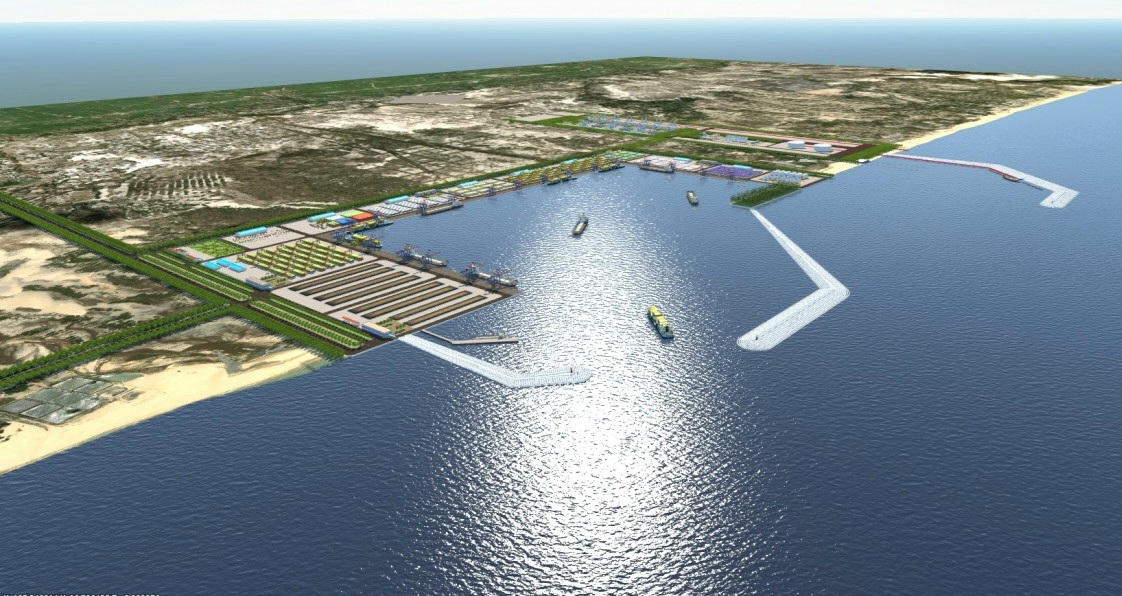
Perspective of Hai Lang LNG Power Complex Project (Quang Tri province).
With great potential for wind and solar energy, Quang Tri is becoming one of the leading localities in the country in the field of renewable energy. To date, the province has had dozens of wind power projects licensed and put into operation, with a total capacity of thousands of MW.
The Huong Linh wind power project, Gelex wind power and solar power plants in Gio Linh and Cam Lo have made an important contribution to providing clean energy for the region. The development of the renewable energy industry not only helps Quang Tri make the most of its natural advantages but also fits the trend of sustainable development.
During the visit and working session of General Secretary To Lam in Quang Tri in mid-October 2024, the General Secretary assessed that Quang Tri has a lot of potential and great advantages, especially clean energy sources, abundant green energy sources and a lot of room for developing renewable energy sources.
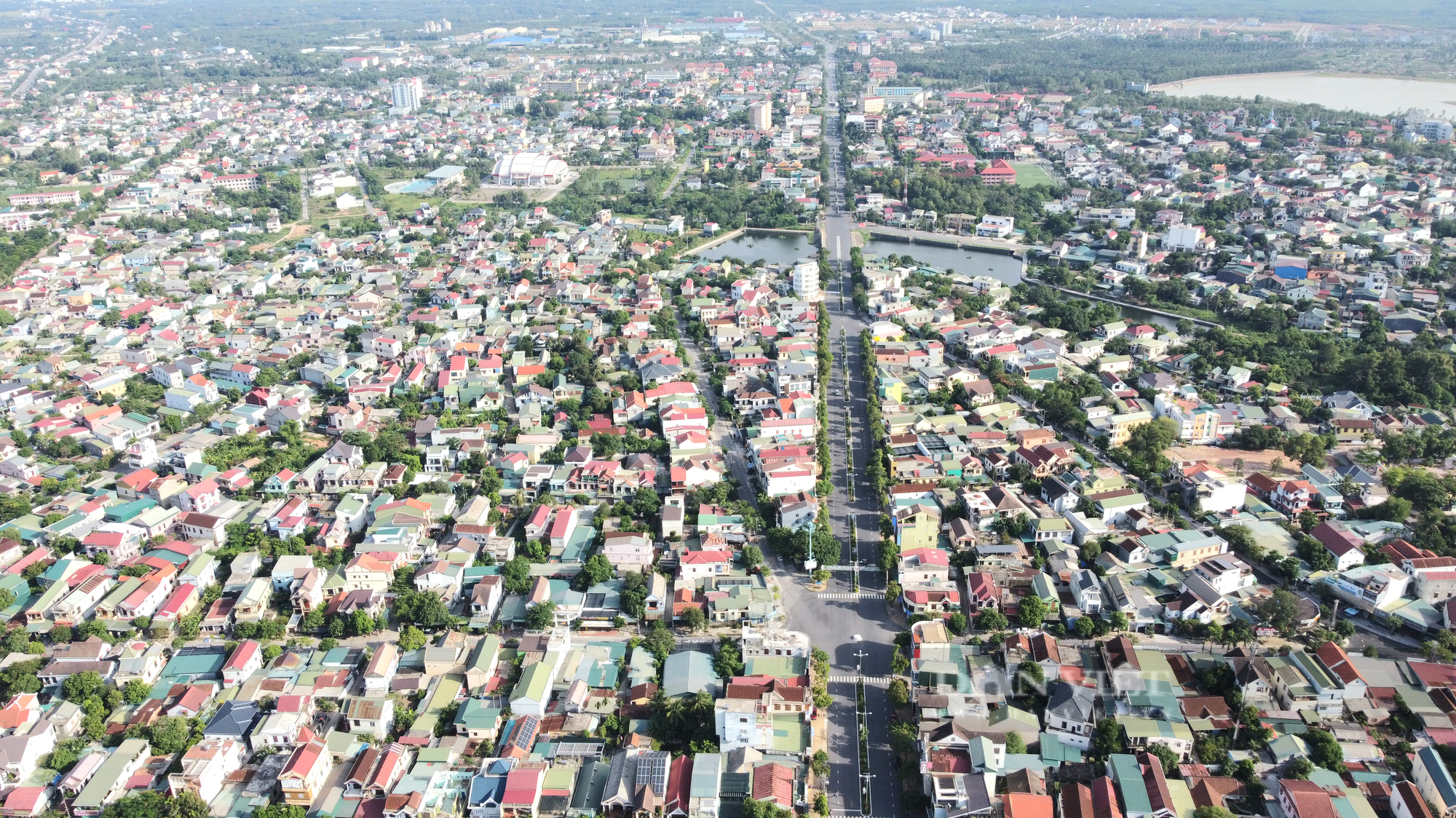
Panoramic view of Dong Ha city (Quang Tri province) from above. Photo: NV
As a land rich in historical and cultural values, Quang Tri is promoting tourism development, especially historical, spiritual and eco-tourism. Destinations such as Truong Son Martyrs Cemetery, Quang Tri Citadel, Vinh Moc Tunnels, and the legendary Ho Chi Minh Trail relic system attract millions of visitors each year.
About Quang Tri agriculture
Quang Tri is also gradually transforming traditional agriculture into high-tech agriculture, increasing product value and income for people.
The province's key agricultural products such as pepper, rubber, Khe Sanh coffee, and Trieu Phong clean rice are being invested in the direction of organic production, meeting export standards.
Quang Tri is a province with a small agricultural land area compared to other provinces in the country. However, the diversity of land and harsh climate conditions, Quang Tri sunshine has a very large solar radiation and this is one of the important factors to create Quang Tri agricultural products with superior quality compared to similar products in other localities.
Nearly 80% of the population in Quang Tri province lives on agriculture. With the motto of turning harsh weather conditions into development advantages, Quang Tri province has determined to develop agriculture, but not traditional agriculture as before, but to apply science and technology in the direction of organic, clean agriculture and consider agriculture as a "midwife" for other economic sectors in the condition of not fundamentally transforming the economic structure.
Proving the agricultural development of Quang Tri province is that from 2017 to now, this province has cooperated with Dai Nam Trading Company Limited - Ong Bien Fertilizer Factory in Ba Ria Vung Tau province to produce organic rice. According to the announcement of Hiroshima University - Japan in 2019, Quang Tri organic rice has achieved all 545 quality criteria and more specifically, Quang Tri organic rice contains 2 compounds Momilactone A and Momilactone B which have the effect of preventing diabetes, gout, and obesity.
Thanks to that, although it has only been on the market for a short time, the brand "Quang Tri Organic Rice" has become a strong brand, distributed in major supermarket chains nationwide such as: 7Eleven, US Mart, Queensland, Farmers Market, Nong San Viet...
And organic rice produced from organic rice grown in Quang Tri has attracted the attention of some international markets such as Japan, Hong Kong, China... This has helped Quang Tri organic rice gradually gain a reputation and a foothold in the domestic and international markets in the coming time.
By 2025, the entire Quang Tri province will have over 1,000 hectares of rice meeting organic standards, and over 3,000 hectares of rice meeting VietGAP standards. By 2030, the area of organic rice in the entire province will increase to over 3,000 hectares, and the area of VietGAP rice will be over 7,000 hectares (accounting for 35% of the total area of the province).
The agriculture, forestry and fishery sector does not contribute much to the GRDP growth rate and its proportion in the economic structure is decreasing, but in the long term it is still the fundamental sector of the socio-economy.
About new rural area of Quang Tri
According to statistics from the Quang Tri New Rural Area Coordination Office, by November 2024, Quang Tri had 75/101 communes meeting new rural standards (over 74.2%), of which 16 communes met advanced new rural standards; the average criteria for the whole province was 16.1 criteria/commune; 6 villages and hamlets in extremely disadvantaged communes in ethnic minority and mountainous areas met new rural standards. Up to now, Quang Tri has 3 districts meeting new rural standards including: Cam Lo, Vinh Linh and Trieu Phong.
Source: https://danviet.vn/2-tinh-quang-binh-quang-tri-xua-chung-mot-ten-nay-mot-tinh-manh-ve-du-lich-tinh-kia-co-gao-huu-co-20250320163817944.htm


![[Photo] Readers line up to visit the photo exhibition and receive a special publication commemorating the 135th birthday of President Ho Chi Minh at Nhan Dan Newspaper](https://vphoto.vietnam.vn/thumb/1200x675/vietnam/resource/IMAGE/2025/5/17/85b3197fc6bd43e6a9ee4db15101005b)


![[Photo] More than 17,000 candidates participate in the 2025 SPT Competency Assessment Test of Hanoi National University of Education](https://vphoto.vietnam.vn/thumb/1200x675/vietnam/resource/IMAGE/2025/5/17/e538d9a1636c407cbb211b314e6303fd)
![[Photo] Prime Minister Pham Minh Chinh chairs meeting on science and technology development](https://vphoto.vietnam.vn/thumb/1200x675/vietnam/resource/IMAGE/2025/5/17/ae80dd74c384439789b12013c738a045)

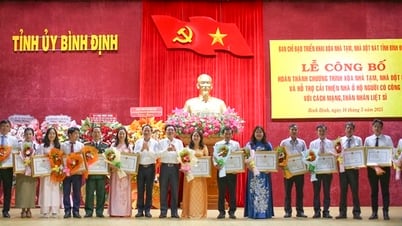

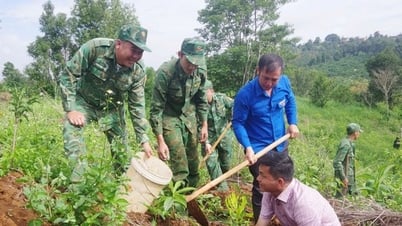


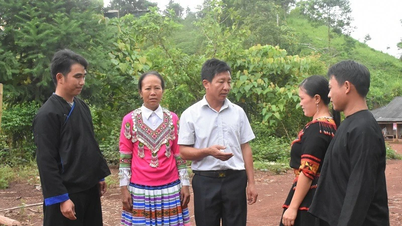
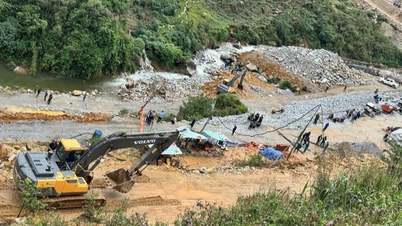
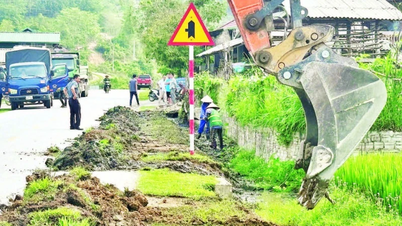






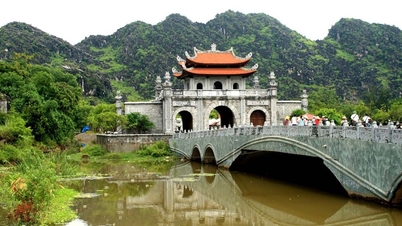
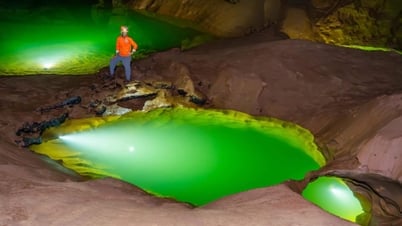
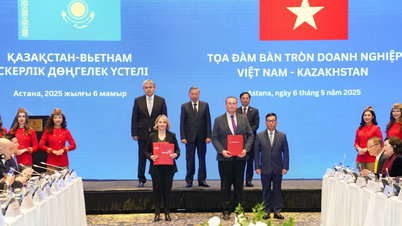

![[Photo] Nearly 3,000 students moved by stories about soldiers](https://vphoto.vietnam.vn/thumb/1200x675/vietnam/resource/IMAGE/2025/5/17/21da57c8241e42438b423eaa37215e0e)




















































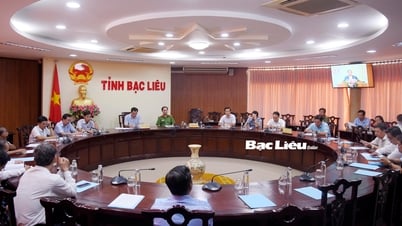
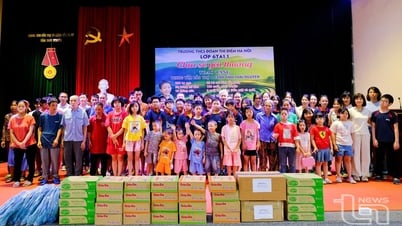

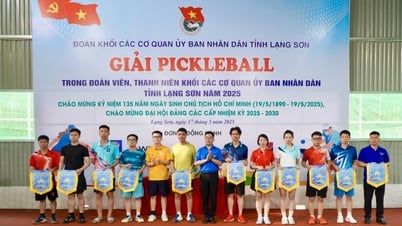

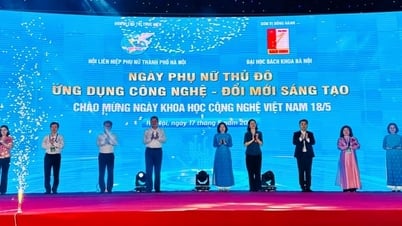














Comment (0)